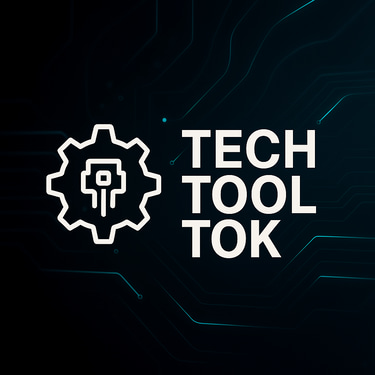Unlocking the Power of ChatGPT: Transforming Businesses and Freelancers
8/20/20255 min read



Understanding ChatGPT: What It Is and How It Works
ChatGPT is a state-of-the-art conversational agent powered by advanced artificial intelligence and machine learning algorithms. At its core, ChatGPT utilizes a variant of the Generative Pre-trained Transformer (GPT) architecture, which enables it to understand and generate human-like text based on the input it receives. Unlike traditional chatbots that rely on pre-defined responses or simple decision trees, ChatGPT comprehends context and nuances in language, allowing for more fluid and engaging interactions.
The underlying technology of ChatGPT involves training the model on diverse datasets, which encompass a wide variety of texts, styles, and subjects. This extensive training allows ChatGPT to respond intelligently in numerous contexts, from casual conversations to more specialized inquiries. Its ability to generate text is not merely about regurgitating phrases but involves predicting what comes next in a conversation based on prior exchanges. This predictive capacity distinguishes ChatGPT from basic automated systems and enhances user experience significantly.
One key aspect of ChatGPT's functionality is its adaptability. It can be fine-tuned for specific tasks by training on targeted datasets, thus increasing its relevance and accuracy in areas such as customer service, content creation, and personal assistance. This adaptability makes it exceedingly valuable for businesses looking to improve user engagement through personalized interactions.
In today’s digital landscape, the relevance of ChatGPT cannot be overstated. With its ability to process and generate language at scale, it offers solutions that empower businesses and freelancers alike. By integrating ChatGPT into their operations, organizations can optimize workflows, automate responses, and enhance client interactions, leading to a more efficient and satisfactory user experience. As the demand for sophisticated conversational agents grows, understanding ChatGPT and its capabilities becomes essential for leveraging its full potential.
Practical Applications of ChatGPT for Businesses and Freelancers
ChatGPT has emerged as a versatile tool that can significantly enhance various operational facets of businesses and freelancers. One of the primary applications lies in improving customer service. With its natural language processing capabilities, ChatGPT can engage with customers through chatbots, providing real-time assistance and answering frequently asked questions. This leads to increased efficiency, as businesses can handle a higher volume of inquiries without the need for additional personnel, ultimately enhancing customer satisfaction.
Another compelling application is content creation. For businesses that rely heavily on digital content, ChatGPT can assist in generating high-quality written materials, such as blog posts, articles, and marketing copy. Freelancers can utilize this tool to brainstorm ideas, draft content drafts, or even create outlines. The ability to produce engaging and relevant content quickly will not only save time but also improve the overall quality of the outputs, allowing professionals to focus on strategy rather than getting bogged down in the writing process.
Moreover, ChatGPT can help automate routine tasks. By integrating this technology into everyday operations, businesses can automate data entry, manage scheduling, and handle other repetitive tasks. For freelancers, leveraging ChatGPT for administrative functions can free up valuable time, enabling them to concentrate on more productive aspects of their work. As a result, both businesses and freelancers can capitalize on enhanced productivity while minimizing operational overheads.
In addition, sectors like education and healthcare are also beginning to see the value of ChatGPT. For instance, in education, it can be used to provide tutoring or answer student queries, while in healthcare, it can assist with appointment scheduling and providing immediate information. These myriad applications underline the transformative potential of ChatGPT, making it an invaluable asset for businesses and freelancers alike.
Integrating ChatGPT-Powered Tools into Your Website: A Step-by-Step Guide
Integrating ChatGPT-powered tools into your website can significantly enhance user interaction and provide innovative solutions for businesses and freelancers. This comprehensive guide outlines the necessary steps to seamlessly incorporate these tools, particularly focusing on sites hosted on Hostinger. The integration process is designed to cater to both beginners and seasoned developers, ensuring accessibility for all users.
Before embarking on the integration process, certain prerequisites must be met. First, ensure that your website is hosted with a compatible service, such as Hostinger, which provides robust support for custom integrations. Additionally, confirm that you possess basic HTML and JavaScript knowledge, as these will be essential for implementing ChatGPT-enabled features. Familiarity with APIs can further facilitate a more streamlined integration process.
Once you've confirmed your prerequisites, the next step is to choose the right ChatGPT-powered tool for your needs. OpenAI offers an array of options, from chatbot interfaces to content generation tools. Select a tool that aligns with your business objectives and target audience. After choosing the appropriate tool, it is essential to sign up for an OpenAI account and obtain the necessary API keys, which will be used to authenticate your application.
With the API keys in hand, you can proceed to add the tool's functionality to your website. Begin by embedding the provided code snippets into your site's HTML. Depending on the tool chosen, this may involve setting up a simple chat interface or implementing more complex features. Be sure to customize the tool to match your brand's design and user experience. Testing the tool is crucial; simulate real-user interactions to identify any potential issues before going live.
Lastly, monitor the performance of the integrated tool through analytics dashboards provided by OpenAI and your hosting service. Regularly analyzing user interactions and feedback will help you optimize the ChatGPT features, ensuring they continuously meet the needs of your audience. With this step-by-step guide, you can confidently enhance your website using ChatGPT-powered tools.
Maximizing Productivity and Monetizing ChatGPT: Tips and Best Practices
In the ever-evolving landscape of digital communication, ChatGPT stands out as a powerful tool for both businesses and freelancers, streamlining workloads and enhancing productivity. To leverage this technology effectively, it is essential to adopt best practices that maximize productivity and enable monetization. First and foremost, optimize your interactions by using clear and specific prompts. This ensures that ChatGPT understands the context and provides the most relevant responses, ultimately improving the overall outcome of the exchange.
Establishing a structured workflow can also aid in maximizing efficiency. For instance, categorize tasks according to their complexity and relevance—simple inquiries or repetitive tasks can be delegated to ChatGPT, allowing you to concentrate on more strategic or creative endeavors. Furthermore, employing a project management tool to track the interactions and outputs from ChatGPT can provide insights into usage patterns, helping you identify areas for improvement and refinement.
Measuring performance metrics is crucial for understanding the value ChatGPT adds to your operations. Set up key performance indicators (KPIs) that reflect engagement levels, such as response accuracy, time saved on specific tasks, and client satisfaction rates. These metrics will not only provide a clearer picture of how ChatGPT contributes to your productivity, but they will also serve as critical data points when considering monetization opportunities.
Entrepreneurs who have successfully monetized ChatGPT often share valuable case studies that can serve as inspiration. For instance, utilizing the tool for content creation, customer support, or even virtual consultations can significantly enhance service offerings and client engagement. By exploring different applications of ChatGPT within your own business model, you can identify unique monetization strategies that align with your goals.
Ultimately, the effective use of ChatGPT hinges on the systematic integration of best practices and continual assessment of its performance, empowering you to unlock its full potential and drive your business forward.

